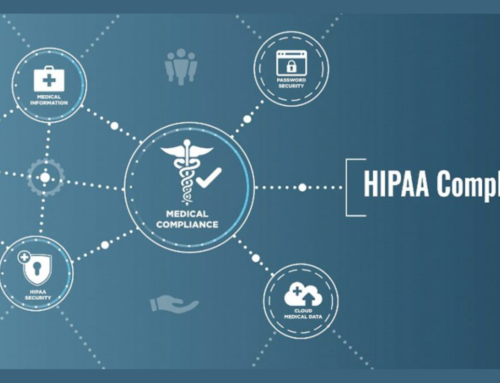Introduction:
The introduction serves as the opening segment of a document or presentation and aims to provide a brief overview of the topics that will be discussed. It often sets the tone for the rest of the content and may include a hook to capture the reader’s or audience’s attention. In your case, the introduction likely introduces the broader theme related to medium-sized enterprises and their need for comprehensive business solutions, with a specific focus on Microsoft 365.
Overview of Medium-Sized Enterprises:
This section delves into the characteristics, challenges, and significance of medium-sized enterprises (SMEs). Medium-sized enterprises are typically businesses that fall between small businesses and large corporations in terms of their size, revenue, and employee count. The overview may touch upon the role of SMEs in the economy, their specific needs and challenges, and why addressing these needs is crucial for their growth and success.
The Need for Comprehensive Business Solutions:
Here, the document or presentation likely explores the challenges and complexities that medium-sized enterprises face in their day-to-day operations. It could include discussions on issues like communication, collaboration, data management, and workflow efficiency. The need for comprehensive business solutions implies that SMEs require integrated tools and strategies to address these challenges effectively and optimize their overall performance.
Microsoft 365: A Brief Overview:
This part provides a concise introduction to Microsoft 365. Microsoft 365 is a suite of productivity tools and cloud-based services offered by Microsoft. It encompasses applications like Word, Excel, PowerPoint, Teams, and more, providing a comprehensive set of tools for communication, collaboration, and productivity. The brief overview may touch upon key features, benefits, and how Microsoft 365 addresses the specific needs of medium-sized enterprises.
Understanding Microsoft 365:
Microsoft 365 is a comprehensive suite of productivity tools and services offered by Microsoft. It encompasses a range of applications and services designed to enhance collaboration, communication, and overall efficiency within organizations. Microsoft 365 is not just a set of standalone products; rather, it is a seamlessly integrated solution that combines familiar desktop applications with cloud-based services. This integration enables users to work seamlessly across various devices and locations, fostering a more flexible and connected work environment.
Components of Microsoft 365:
Microsoft 365 comprises a diverse set of components that cater to different aspects of business operations. At its core are the well-known productivity applications such as Word, Excel, PowerPoint, and Outlook. These applications are complemented by cloud-based services like OneDrive for Business, SharePoint, and Teams, which facilitate file storage, collaboration, and communication. Additionally, Microsoft 365 offers security and compliance features, ensuring that sensitive data is protected and regulatory requirements are met. Understanding these components and their interplay is crucial for organizations aiming to leverage the full potential of Microsoft 365.
Licensing Options for Medium-Sized Enterprises:
Medium-sized enterprises have various licensing options within the Microsoft 365 ecosystem, allowing them to tailor their subscriptions based on their specific needs and budget constraints. Licensing options typically include different plans with varying levels of features and services. This flexibility enables organizations to choose the plan that best aligns with their requirements, whether it’s focusing on core productivity tools or incorporating advanced security and compliance features. Understanding the available licensing options is essential for medium-sized enterprises to optimize their investment in Microsoft 365 and ensure they have the right tools to support their business operations.
Cloud-Based Infrastructure and Accessibility:
A fundamental aspect of Microsoft 365 is its cloud-based infrastructure. By leveraging cloud technology, organizations can enjoy the benefits of enhanced accessibility, scalability, and collaboration. Users can access their files and applications from virtually anywhere, promoting remote work and flexibility. The cloud-based nature of Microsoft 365 also ensures that software updates and security patches are automatically delivered, reducing the burden on IT teams and keeping the environment up-to-date. Understanding the implications of this cloud-based infrastructure is crucial for organizations seeking to harness the power of Microsoft 365 in creating a modern and efficient workplace.
Productivity Suite: Office 365
The Productivity Suite: Office 365 is a comprehensive set of applications and services developed by Microsoft to enhance productivity and facilitate various tasks in both personal and professional settings. Here’s a more detailed description of some key components:
Word, Excel, PowerPoint: Cloud-Enabled Productivity:
Word: A word processing application that allows users to create, edit, and format documents. It provides a wide range of tools for text editing, formatting, and document styling.
Excel: A spreadsheet application that enables users to create and manage spreadsheets for tasks such as data analysis, calculations, and visualization. Excel includes powerful features like formulas, charts, and pivot tables.
PowerPoint: A presentation software that allows users to create visually appealing slideshows. It provides tools for adding text, images, videos, and animations to create engaging presentations.
The “Cloud-Enabled Productivity” aspect implies that these applications are not only installed on your local device but are also integrated with cloud services. This enables users to access their documents from anywhere, collaborate in real-time with others, and seamlessly switch between devices without losing work.
Collaborative Editing and Real-Time Updates:
Office 365 facilitates collaboration by allowing multiple users to work on the same document simultaneously. This real-time collaboration feature ensures that changes made by one user are immediately reflected for others, fostering efficient teamwork.
Users can leave comments, track changes, and work together seamlessly, whether they are in the same physical location or located remotely.
Outlook: Streamlined Email and Communication:
Outlook is an email and personal information management application. It provides a unified platform for managing emails, contacts, calendars, and tasks.
The Streamlined Email and Communication feature implies that Outlook helps users manage their communication more efficiently. It includes features such as a focused inbox, categorization, and powerful search capabilities. Additionally, Outlook integrates with other Office 365 applications, creating a seamless experience for communication and collaboration.
Communication Tools: Microsoft Teams
In the ever-evolving landscape of digital communication, Microsoft Teams stands out as a robust and versatile platform that serves as a centralized collaboration hub for teams and organizations. This tool is designed to streamline communication and enhance teamwork by providing a unified space for various collaborative activities.
Centralized Collaboration Hub:
Microsoft Teams functions as a centralized hub where team members can converge, communicate, and collaborate on projects in real-time. The platform integrates chat, file sharing, and collaborative document editing, providing users with a seamless experience for both synchronous and asynchronous collaboration. This centralized approach helps reduce communication silos and ensures that all relevant discussions and resources are easily accessible within a single interface.
Teams supports channels, where conversations can be organized based on specific topics or projects. This feature fosters a structured and organized collaboration environment, allowing team members to engage in focused discussions and find relevant information efficiently. The ability to tag individuals, share files, and connect external apps within the platform further enhances the collaborative experience.
Integration with Other Microsoft 365 Apps:
One of Microsoft Teams’ key strengths lies in its seamless integration with other Microsoft 365 applications. This integration enhances the overall productivity and efficiency of users by allowing them to access and utilize tools such as Word, Excel, PowerPoint, and SharePoint directly within the Teams interface. Users can co-author documents, share files, and even initiate video calls without switching between different applications.
The deep integration with Microsoft 365 also means that Teams serves as a gateway to a wide range of productivity features, bringing together email, calendar, and collaborative document editing in a unified environment. This integration not only simplifies the user experience but also leverages the power of the entire Microsoft ecosystem to create a comprehensive and interconnected workspace.
Video Conferencing and Virtual Meetings:
Microsoft Teams facilitates effective communication through its robust video conferencing and virtual meeting capabilities. Users can conduct high-quality video calls, schedule virtual meetings, and share their screens with ease. The platform’s video conferencing features support both small team huddles and large-scale webinars, providing flexibility for diverse collaboration scenarios.
Teams’ virtual meeting capabilities extend beyond video calls, offering features like chat during meetings, real-time collaboration on shared documents, and the ability to record meetings for future reference. The inclusion of features like background blur and virtual backgrounds enhances the overall meeting experience, creating a professional and visually appealing environment for participants.
Microsoft Teams not only serves as a communication tool but also as a comprehensive collaboration platform that brings together various elements of teamwork in a unified digital space. Its centralized hub, integration with Microsoft 365 apps, and robust video conferencing capabilities make it a powerful solution for organizations seeking to enhance their collaborative workflows.
Security Measures in Microsoft 365
Data Encryption and Compliance Features:
- Data Encryption: Microsoft 365 employs robust encryption mechanisms to protect data both in transit and at rest. This means that when data is being transmitted between devices or stored on Microsoft’s servers, it is encrypted to prevent unauthorized access.
- Information Rights Management (IRM): This feature allows users to define and control permissions for accessing sensitive information. It enables restrictions such as preventing printing, copying, or forwarding of specific documents to maintain data integrity and confidentiality.
- Data Loss Prevention (DLP): Microsoft 365 includes DLP policies that help organizations prevent accidental or intentional leakage of sensitive information. These policies can be configured to identify and block the sharing of confidential data.
Identity and Access Management:
- Azure Active Directory (Azure AD): Azure AD is a crucial component of Microsoft 365’s identity and access management. It provides a secure and scalable identity platform, enabling single sign-on (SSO) for users across various applications and services.
- Multi-Factor Authentication (MFA): Microsoft 365 supports MFA, adding an extra layer of security by requiring users to verify their identity through multiple methods, such as a password and a temporary code sent to their mobile device.
- Conditional Access: This feature allows organizations to set policies that control access to resources based on specific conditions, such as user location, device health, or login risk.
Threat Protection and Incident Response:
- Advanced Threat Protection (ATP): Microsoft 365 ATP includes various security features to safeguard against advanced threats. This includes protection against malware, phishing attempts, and malicious links in emails and documents.
- Threat Intelligence: Microsoft 365 leverages threat intelligence to enhance its security capabilities. It continuously monitors and analyzes global threat data to identify and respond to emerging security threats.
- Incident Response: In the event of a security incident, Microsoft 365 provides tools and features to investigate, mitigate, and respond effectively. This includes features like automated alerting, logging, and integration with other security solutions.
Customization and Integration:
In the dynamic landscape of modern business, customization and integration play pivotal roles in optimizing workflow efficiency. Microsoft 365 offers a robust suite of tools and applications, providing businesses, especially Micro and Small Enterprises (MSEs), with the flexibility to tailor their digital workspace. Customization allows MSEs to mold Microsoft 365 to their unique requirements, aligning the platform more closely with their specific business processes. Whether it’s configuring collaboration tools, personalizing user interfaces, or streamlining data management, MSEs can finely tune Microsoft 365 to enhance productivity and user experience.
Tailoring Microsoft 365 to MSEs’ Unique Requirements:
Micro and Small Enterprises often have distinct operational needs compared to larger corporations. Tailoring Microsoft 365 to MSEs’ unique requirements involves not only adjusting the platform’s features but also aligning it with the scale, budget, and goals of these smaller businesses. This might include configuring security settings, optimizing communication channels, or integrating specialized applications relevant to the industry. The ability to adapt Microsoft 365 to specific needs positions MSEs to derive maximum value from the platform, addressing their challenges and fostering growth.
Third-Party Integrations and Compatibility:
In today’s interconnected business environment, the ability of software to seamlessly integrate with third-party applications is crucial. Microsoft 365 recognizes this need and offers extensive compatibility with a wide range of third-party tools. MSEs can integrate their preferred applications, such as customer relationship management (CRM) systems, accounting software, or industry-specific solutions, with Microsoft 365. This not only enhances the functionality of the platform but also ensures a cohesive and interconnected digital ecosystem. The compatibility with third-party integrations empowers MSEs to leverage the best tools for their specific needs while still enjoying the benefits of Microsoft 365.
Automation with Power Platform:
Automation is a key driver of efficiency in modern business operations. Microsoft 365 empowers MSEs to automate repetitive tasks and streamline workflows through its Power Platform. Comprising Power Automate, Power Apps, and Power BI, this suite allows MSEs to create custom solutions without extensive coding knowledge. Power Automate automates workflows, Power Apps facilitates the development of custom applications, and Power BI provides robust business analytics. This automation capability not only saves time and reduces errors but also enables MSEs to focus on strategic initiatives, innovation, and business growth, rather than being bogged down by routine tasks.
The customization and integration features of Microsoft 365, tailored to the unique requirements of Micro and Small Enterprises, along with third-party compatibility and the automation capabilities of the Power Platform, collectively contribute to creating a powerful, flexible, and efficient digital environment for MSEs to thrive in the modern business landscape.
Cost Analysis and ROI (Return on Investment):
Cost Analysis: This involves a comprehensive examination of all the expenses associated with a particular project, product, or initiative. It includes both direct and indirect costs such as equipment, software, labor, training, maintenance, and any other relevant expenses. The goal is to provide a clear understanding of the financial investment required for the undertaking.
Return on Investment (ROI): ROI is a financial metric that evaluates the profitability and efficiency of an investment. It is calculated by dividing the net gain from the investment by the initial cost of the investment and expressing it as a percentage. A positive ROI indicates that the investment is generating more value than its cost, while a negative ROI suggests the opposite.
Calculating the Total Cost of Ownership :
Total Cost of Ownership: TCO goes beyond the initial purchase price of a product or service and takes into account all costs associated with its acquisition, implementation, operation, and maintenance over its entire lifecycle. This includes direct costs like purchase and installation, as well as indirect costs such as training, support, and ongoing maintenance. TCO provides a more holistic view of the financial impact of an investment.
Factors in TCO: Understanding TCO involves considering various factors, including hardware and software costs, maintenance expenses, operational costs, training, and potential downtime. By evaluating the TCO, organizations can make more informed decisions about the long-term viability and affordability of a particular solution.
Scalability and Future-Proofing:
Scalability: Scalability refers to the ability of a system, process, or solution to handle an increasing amount of workload or demand. In the context of technology or business solutions, scalability is crucial for accommodating growth without a significant increase in costs or performance degradation. A scalable solution can adapt to changing needs and expanding user bases.
Future-Proofing: Future-proofing involves designing or selecting solutions that can withstand the challenges and changes anticipated in the future. It aims to minimize the risk of obsolescence and ensures that the chosen solution remains relevant and effective over an extended period. This could involve investing in technologies that have a roadmap for updates and enhancements or selecting platforms that are compatible with emerging industry standards.
Challenges and Considerations
Embracing Microsoft 365 as a comprehensive productivity and collaboration suite comes with its set of challenges and considerations. While the platform offers a multitude of tools and features, organizations often grapple with the complexities of adoption, integration, and user training. Managing the transition from traditional workflows to cloud-based solutions requires strategic planning and a robust change management strategy.
Addressing Common Concerns in Microsoft 365 Adoption
One of the primary challenges in Microsoft 365 adoption is the resistance to change among users. Employees accustomed to legacy systems may feel overwhelmed by the sheer breadth of the Microsoft 365 suite. Addressing this concern requires effective communication, training programs, and support mechanisms to help users navigate the transition smoothly. Ensuring that employees understand the benefits and advantages of Microsoft 365 can alleviate apprehensions and foster a more positive attitude toward the new platform.
Data Privacy and Compliance Challenges
Data privacy and compliance are critical considerations in the adoption of Microsoft 365, especially in industries with stringent regulations. Storing sensitive information in the cloud raises concerns about data security and compliance with regional and industry-specific regulations. Organizations must implement robust security measures, such as encryption and access controls, to safeguard sensitive data. Additionally, staying informed about updates to compliance standards and ensuring that Microsoft 365 adheres to these standards is essential for maintaining a secure and compliant environment.
Balancing Security with User Experience
Finding the right balance between security and user experience is an ongoing challenge in Microsoft 365 adoption. Security measures, such as multi-factor authentication and encryption, are crucial for protecting organizational data. However, implementing overly restrictive security protocols can hinder user productivity and lead to frustration. Striking the right balance involves customizing security settings based on the organization’s risk tolerance and user requirements. Regularly evaluating and adjusting security measures ensures that the organization remains resilient to evolving threats without compromising user experience.
Successful Microsoft 365 adoption requires a holistic approach that addresses user concerns, prioritizes data privacy and compliance, and strikes a delicate balance between security and user experience. Organizations that navigate these challenges with thoughtful planning and adaptability are better positioned to harness the full potential of Microsoft 365 for enhanced productivity and collaboration.
Conclusion:
In conclusion, Microsoft 365 emerges as a powerful and versatile solution for medium-sized enterprises seeking to enhance productivity, communication, and security. By understanding the key components and features of Microsoft 365, as well as adopting best practices in customization, migration, and cost analysis, MSEs can embark on a successful digital transformation journey.
The case studies presented in this article illustrate the tangible benefits that Microsoft 365 can bring to medium-sized enterprises. From streamlining communication to improving collaboration and fortifying security measures, Microsoft 365 offers a comprehensive suite of tools that empower MSEs to thrive in today’s competitive business landscape.
As technology continues to evolve, medium-sized enterprises must remain agile and adaptable. The future trends and updates discussed in this article provide a glimpse into the ongoing commitment of Microsoft to innovate and enhance Microsoft 365. By staying informed and embracing these advancements, MSEs can position themselves for sustained success and growth.
Microsoft 365 includes popular applications such as Word, Excel, PowerPoint, Outlook, Teams, SharePoint, and OneDrive, along with various security and management features.
Microsoft 365 provides a set of collaboration tools, such as Microsoft Teams, SharePoint, and OneDrive, facilitating real-time communication, file sharing, and collaborative document editing.
Microsoft 365 includes advanced security features like threat protection, information protection, identity management, and compliance tools to safeguard data and ensure a secure working environment.
Yes, Microsoft 365 is highly customizable. Enterprises can choose from various plans and add-on services to tailor the suite to their specific requirements, ensuring scalability and flexibility.
With tools like Teams, OneDrive, and cloud-based collaboration features, Microsoft 365 enables seamless remote work, allowing employees to collaborate and access their work from anywhere with an internet connection.
Azure Active Directory (Azure AD) is an identity and access management service integrated with Microsoft 365. It enhances security by providing a single sign-on experience and managing user identities effectively.
Microsoft 365 includes compliance features and tools to help organizations meet regulatory requirements. It offers data loss prevention (DLP), eDiscovery, and audit logs to assist in compliance efforts.
Yes, Microsoft provides training resources and documentation to help users and IT administrators transition smoothly to Microsoft 365. Additionally, there are third-party training options and a robust support community.
Microsoft 365 offers a variety of plans with different features and pricing tiers. The cost depends on the specific needs of the organization, such as the number of users, desired applications, and additional services.








